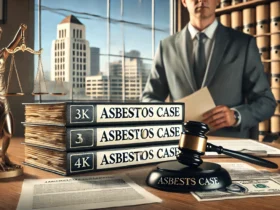Introduction
Entitlement to receive distribution member lawsuit is a term that comes up often in legal discussions about distributing assets or profits among members of an organization or partnership. Understanding this concept is crucial for anyone involved in legal disputes over distributions. This guide will explore the importance of entitlement to receive distribution member lawsuit, explain what it means, and provide insight into the legal processes and challenges associated with it.
What Is Entitlement To Receive Distribution?
Entitlement to receive distribution refers to the right a member has to receive their share of assets or profits from a partnership, company, or organization. This right is typically established through agreements, statutes, or company bylaws. In the legal context, this entitlement is significant because it defines how and when members can claim their portion of distributions.
Types Of Distributions In Legal Matters
In legal contexts, distributions can take several forms:
1. Distribution of Assets: This involves dividing the physical or financial assets of an organization among its members. For example, when a company is dissolved, its assets are distributed according to the entitlements of its members.
2. Distribution of Profits: This refers to sharing the earnings of a business among its members. Profit distribution is often governed by the terms set out in a partnership agreement or company bylaws.
3. Other Relevant Distributions: There can be other types of distributions, such as dividends paid to shareholders or specific distributions based on contractual agreements between parties.
Understanding Member Lawsuits
A member lawsuit is a legal action taken by a member of an organization or partnership to assert their rights, such as their entitlement to receive distribution. These lawsuits aim to resolve disputes over the allocation of assets or profits.
1. Definition and Purpose: A member lawsuit is filed when a member believes that they have not received their rightful share of distributions. The purpose is to enforce the member’s rights as outlined in agreements or laws.
2. Common Reasons for Filing a Member Lawsuit: Members might file lawsuits if they feel that their entitlement to receive distribution is being unfairly withheld, miscalculated, or misallocated.
3. Key Players in a Member Lawsuit: The main participants include the plaintiff (the member filing the lawsuit), the defendant (the party being sued), and the court, which will decide the outcome.
Grounds For Entitlement In A Lawsuit
Several grounds can establish a member’s entitlement to receive distribution in a lawsuit:
1. Contractual Obligations: Agreements between members or with the organization often specify how distributions should be handled. Breaches of these agreements can lead to lawsuits.
2. Statutory Rights: Laws and regulations may provide rights to members regarding distributions. For instance, partnership laws often outline how profits should be divided.
3. Case Law Examples: Previous court decisions can impact current cases. Courts may look at past rulings to determine how similar issues were resolved, setting precedents for how entitlements should be handled.
Legal Processes Involved
Filing a lawsuit for entitlement to receive distribution involves several steps:
1. Filing a Lawsuit for Entitlement: The process begins with filing a complaint in court, outlining the claim and the basis for the entitlement to receive distribution.
2. Legal Procedures and Timelines: The court will set timelines for submitting evidence, attending hearings, and other procedural matters. These timelines must be followed carefully.
3. Evidence Required for Claiming Entitlement: Members need to provide evidence supporting their claim, such as financial records, contracts, or communication showing their entitlement to receive distribution.
Case Studies And Examples
Examining notable cases can provide insight into how entitlement to receive distribution issues are handled:
1. Notable Cases Involving Entitlement and Member Lawsuits: Cases where members have successfully asserted their entitlement to receive distribution can highlight common strategies and outcomes.
2. Analysis of Outcomes and Precedents: Analyzing these cases helps understand how courts have interpreted laws and agreements regarding distribution entitlements.
Potential Outcomes And Remedies
When a lawsuit is filed over entitlement to receive distribution, the possible outcomes include:
1. Possible Results of a Lawsuit: The court may order the organization to make the distribution or rectify any issues with the distribution.
2. Compensation and Distribution Methods: Remedies may include monetary compensation or adjustments to future distributions to ensure the member receives their entitled share.
3. Impact on the Parties Involved: The outcome can affect not just the member but also the organization, potentially leading to changes in distribution practices or financial adjustments.
Challenges And Common Issues
Disputes over entitlement to receive distribution can present various challenges:
1. Disputes Over Entitlement: Determining who is entitled to what can be complex, especially if agreements are vague or disputed.
2. Legal and Practical Challenges: Members may face difficulties gathering evidence, understanding legal procedures, or negotiating settlements.
3. How to Address and Overcome These Issues: Seeking legal advice, gathering thorough documentation, and being prepared for negotiations can help overcome these challenges.
Legal Advice And Representation
Having the right legal representation is crucial in a member lawsuit:
1. Importance of Consulting a Legal Expert: A lawyer can help navigate the complexities of a lawsuit and ensure that a member’s entitlement to receive distribution is properly asserted.
2. How to Choose the Right Lawyer for Your Case: Look for a lawyer with experience in handling distribution disputes and member lawsuits.
3. What to Expect from Legal Representation: A lawyer will assist with filing paperwork, gathering evidence, and representing the member in court.
Preventive Measures and Best Practices
To avoid disputes over entitlement to receive distribution:
1. How to Avoid Disputes Over Entitlement: Clear agreements and regular communication can prevent misunderstandings and conflicts.
2. Best Practices for Members and Organizations: Keeping detailed records, following agreements, and being transparent can help manage and reduce disputes.
Conclusion
In summary, entitlement to receive distribution member lawsuit is a crucial topic in legal disputes involving asset and profit distributions. Understanding the definition, types of distributions, and the legal processes involved can help members and organizations handle these issues effectively. By knowing the common challenges and seeking appropriate legal advice, parties can better manage their entitlements and resolve disputes efficiently.
To read more, visit our blog page. We do have more topics!












Got a Questions?
Find us on Socials or Contact us and we’ll get back to you as soon as possible.